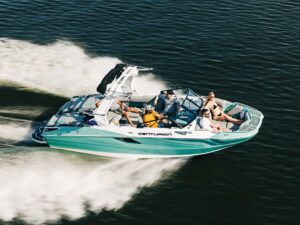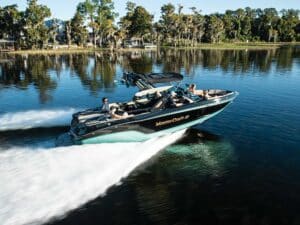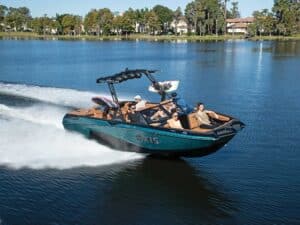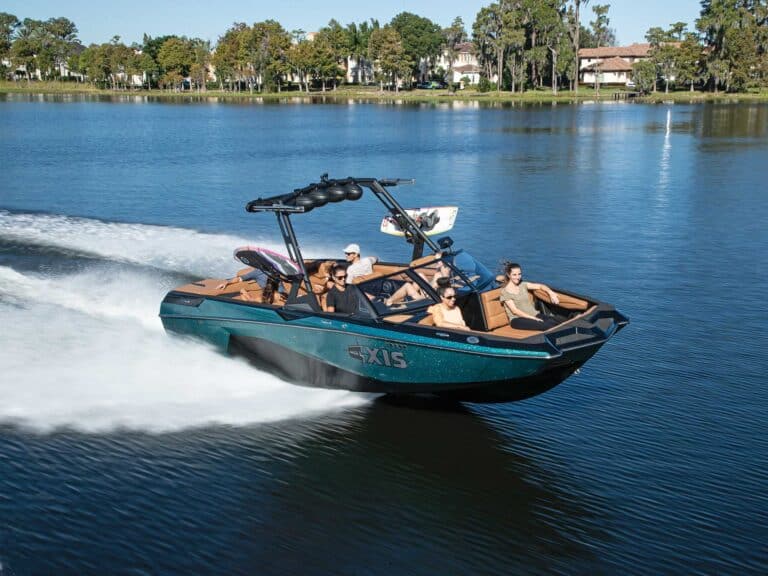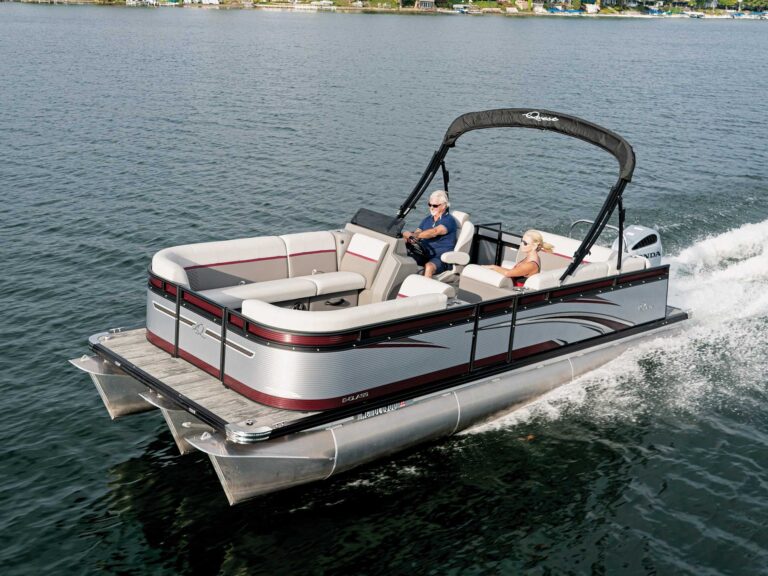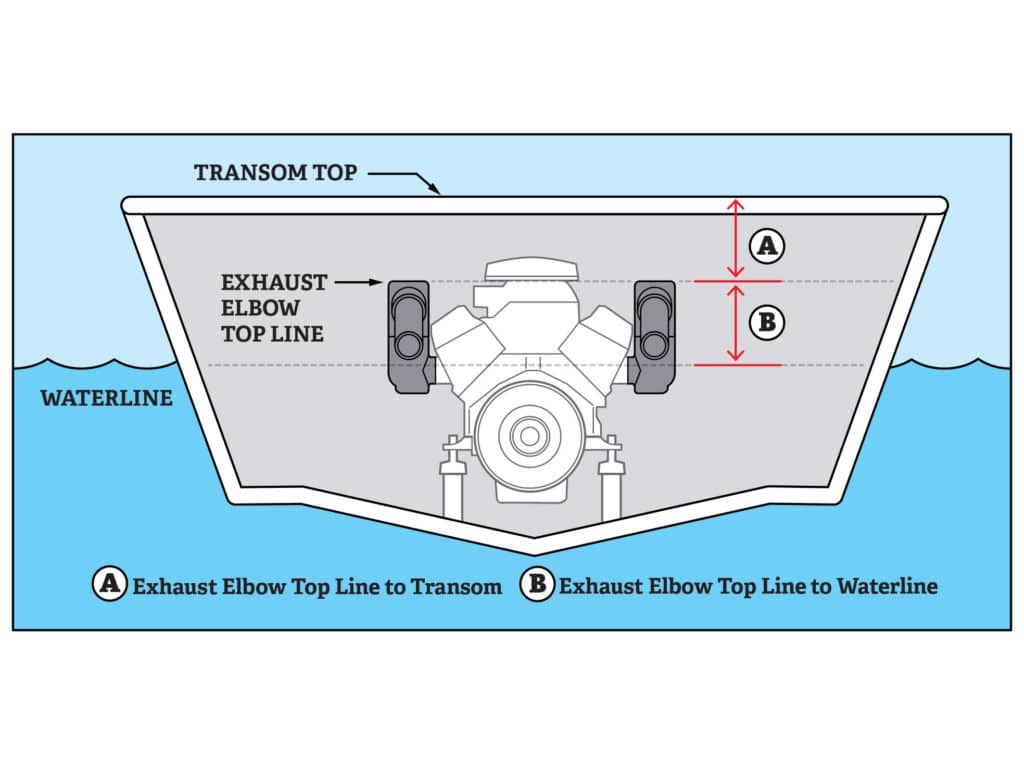
Hydrolock occurs when water intrudes into the combustion chambers of a boat engine. It can prevent starting (at minimum) and, because liquid water does not compress, it can crack blocks or bend connecting rods (at worst). Hydrolock can happen solely due to failure of parts such as cracked exhaust manifolds or a faulty head gasket.
It can also happen as a result of operational error. In addition to keeping your gear in tiptop shape, boaters must avoid making the mistakes that can cause hydrolocking, especially for an inboard- or sterndrive-powered boat.
Specifically, these types of engines can hydrolock due to cooling water being forced, or being siphoned, up the exhaust plumbing and into the cylinders with open exhaust ports.
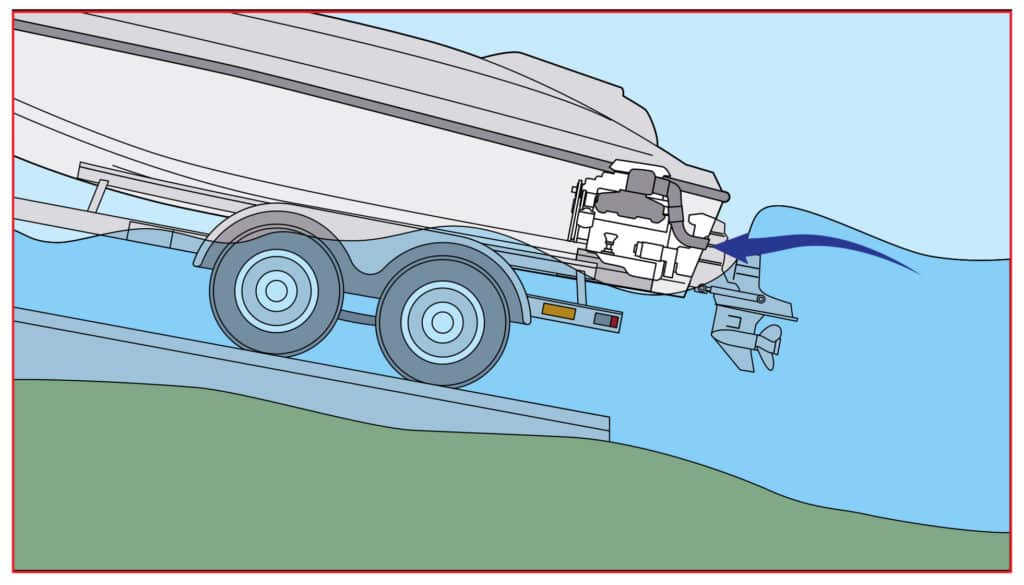
Cause and Effect
Two ways hydrolock can occur happen while launching the boat off a trailer. At a shallow ramp, the boat can be forced deeper into the water than it would normally sit while afloat. If the water level outside the boat is higher than the exhaust-riser height inside, water can back-flood through the exhaust and enter any cylinder with its exhaust port open. (Half the cylinders will have exhaust ports open at any given time.) You can prevent this by backing in enough to submerge the cooling-water intake and then pausing the launch to start the engine. I am not advising so-called power launching, which is forbidden at many ramps. Simply continue to launch with the engine running in neutral. The expelling exhaust gases should keep water out.
At a steep ramp, using a roller trailer or simply backing the rig quickly into the water can both force water up the exhaust system. So, back in slowly. Don’t just let the boat go off a roller trailer; use the winch or a line to control and slow launches on steep ramps. As above, launch until the cooling intake is submerged, start the engines, then continue launching. A running engine evacuates water out the exhaust.
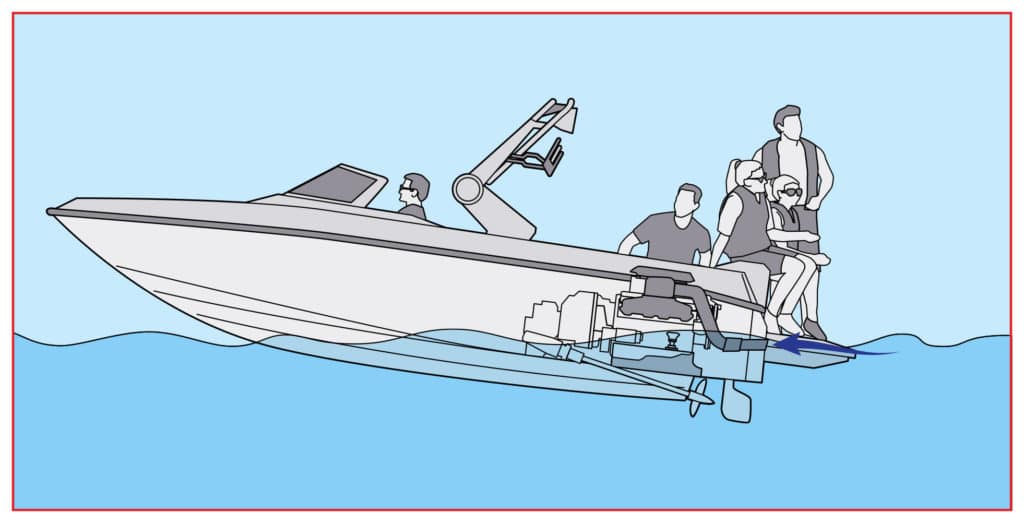
Throttling Down
Hydrolock can also sometimes occur if the captain chops the throttle. This is a bad practice. Doing so causes the boat’s wake—a wave of water outside the boat—to hit the transom and possibly run up the exhaust pipe and into any open cylinders. It might also cause any water currently being evacuated by the exhaust gases to run back up and into a cylinder. Instead, throttle back gradually and allow your wake to flow under the boat before shifting into neutral and stopping or reversing.
Also, allow your boat’s engine to idle down for a few cycles—at least 30 seconds—before turning off the ignition. An engine shutoff immediately can sometimes run backward for a second or two and ingest cooling water that had been on its way to being discharged. Flipping the coin, if your boat’s engine will not start, don’t just keep cranking. The engine can’t develop enough pressure in the exhaust system to expel the cooling water. When you eventually stop cranking, such as when the battery goes dead, this water flows back into a cylinder through an open valve.
If you own a watersports boat, it’s a particularly good practice to drain the aft ballast tanks or move bags of lead ballast forward if you will be stopping the boat to hang out and swim. The weight of the ballast aft, combined with the weight of your crew on the swim step, can sink the boat deep enough to raise the static waterline to a point that is high enough for water to back-flood up the exhaust and cause hydrolock. Any sterndrive- or inboard-powered boat can have this happen. If you check your owner’s manual, you’ll probably find a disclaimer about being cautious of conditions—like too much weight aft—that can raise the static waterline.
Built-In Protections
Boatbuilders and engine-makers realize hydrolock can occur, so they design products to minimize water ingress. Exhaust-system design factors largely here. While a big sport-fisher might have engines fitted with a length of exhaust tube that runs past the manifold to absorb some surging water running up the exhaust, this is not the case with your typical sterndrive or small inboard. But exhaust-riser height is addressed and usually set at a minimum of 13 inches above the static waterline, with many engines and builders specifying even more height. You can measure the distance of your exhaust elbows above the waterline yourself. If there is room under the cockpit sole or motor hatch for more height, exhaust risers of varying heights are available and can be installed as a DIY project or by a shop. Compare exhaust heights when shopping for a new boat, and if one maker offers its engine with higher exhaust elbows, ask why. In general, more height is better.
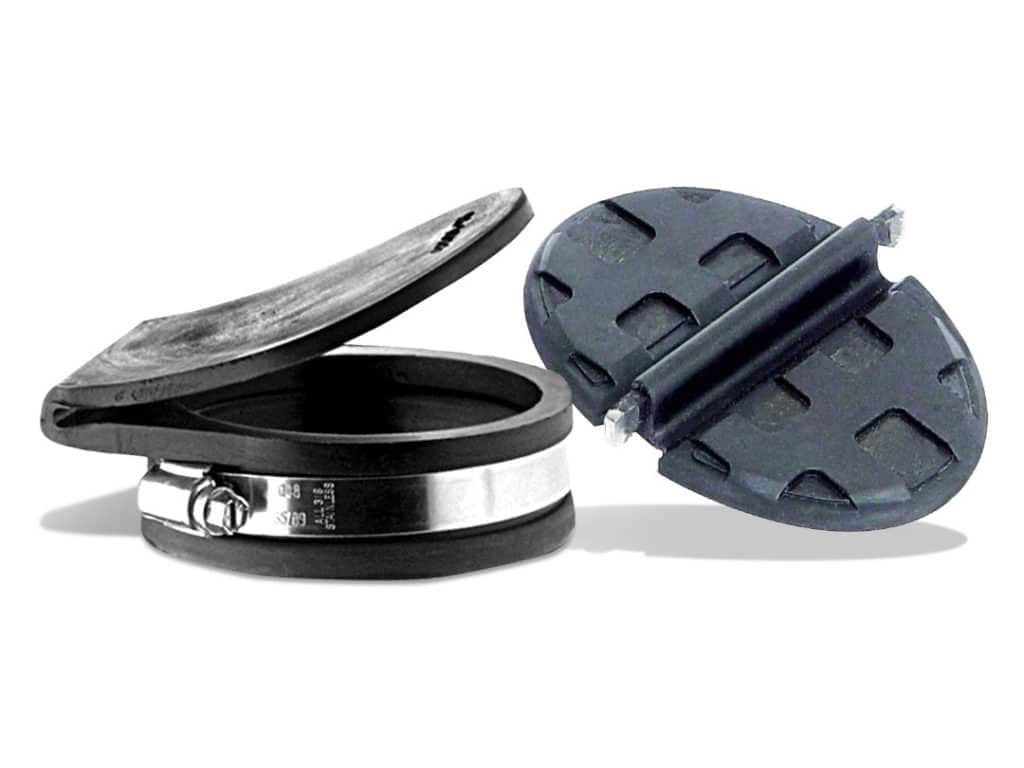
Shutters and Flaps
Some marine engines also have shutters—flaps installed inside the exhaust plumbing of marine engines. They are one-way valves intended to prevent water from sloshing toward the engine and getting into any cylinders. Shutters should be inspected annually and replaced as needed. Broken shutter pieces might cause exhaust cooling-water blockage. On newer engines, shutters are pretty easy to access; however, they are a chore on older engines.
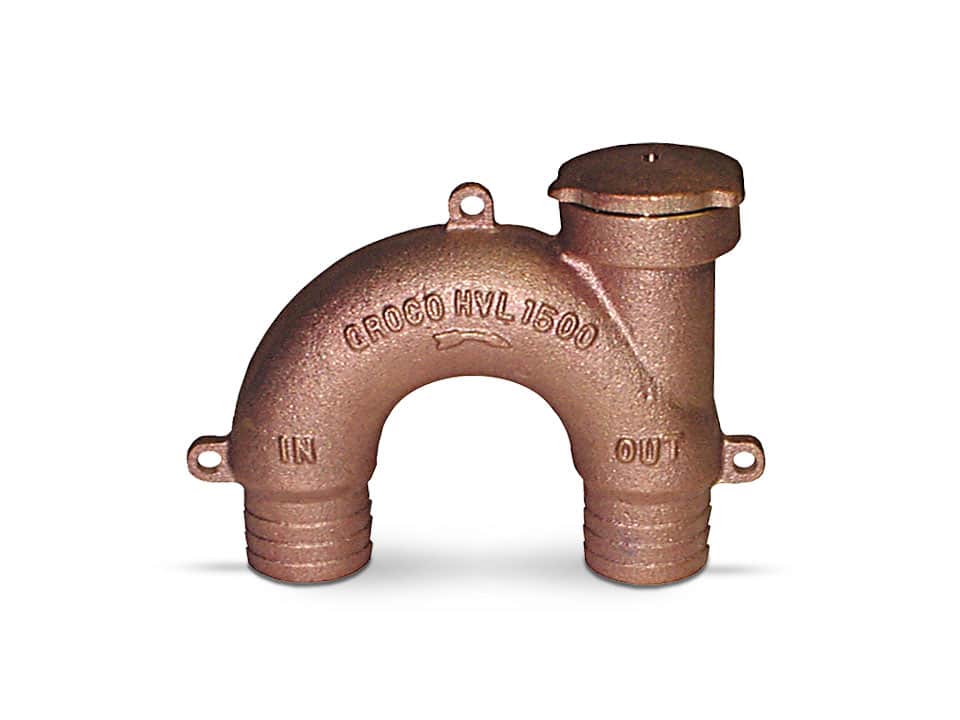
Flappers, which are not shutters, refer to flaps installed on or just inside a boat’s through-hull exhaust port. These also serve as one-way valves to inhibit water from backing up through the exhaust. Flappers should be inspected and replaced as needed. This is an easy DIY task.
Hydrolock can happen to your marine engine. As with many boating service issues, rigorous maintenance will help keep it at bay. But don’t forget that attention to trailering and on-water operation can also play a part in preventing hydrolocking.

